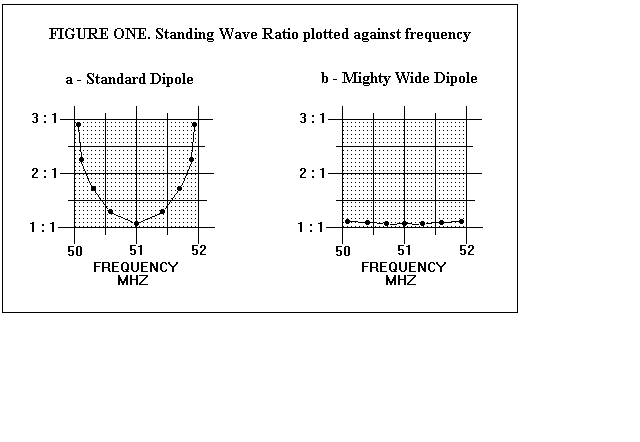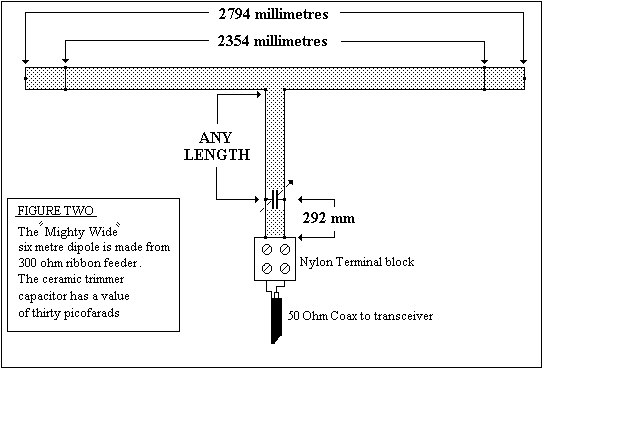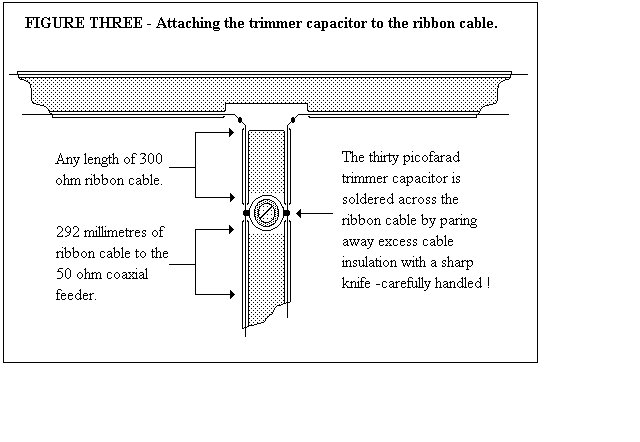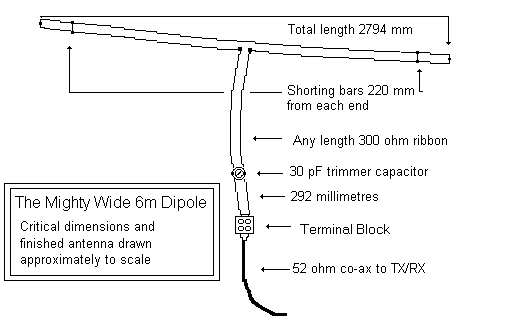
 I used the non - slotted variety of ribbon cable , which is available from the Maplin catalogue. The radiating element of the antenna has a total length of 2794 millimetres. The antenna feedpoint is connected to a section of the same ribbon feeder. This section can be of any length ,which is most convenient for siting the antenna.
I used the non - slotted variety of ribbon cable , which is available from the Maplin catalogue. The radiating element of the antenna has a total length of 2794 millimetres. The antenna feedpoint is connected to a section of the same ribbon feeder. This section can be of any length ,which is most convenient for siting the antenna.
